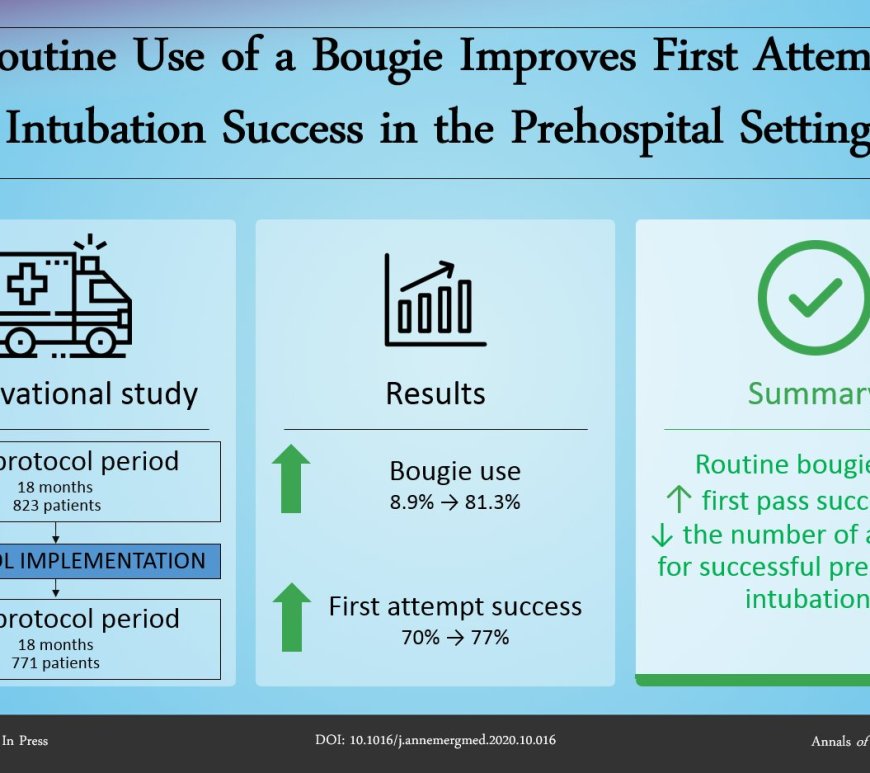
Routine Use of a Bougie Improves First-Attempt Intubation Success in the EMS Setting
Study objective The bougie is typically treated as a rescue device for difficult airways. We evaluate whether first-attempt success rate during paramedic intubation in the out-of-hospital setting changed with routine use of a bougie. Methods A prospective, observational, pre-post study design was used to compare first-attempt success rate during out-of-hospital intubation with direct laryngoscopy for patients intubated 18 months before and 18 months after a … Continue reading Routine Use of a Bougie Improves First-Attempt Intubation Success in the EMS Setting


